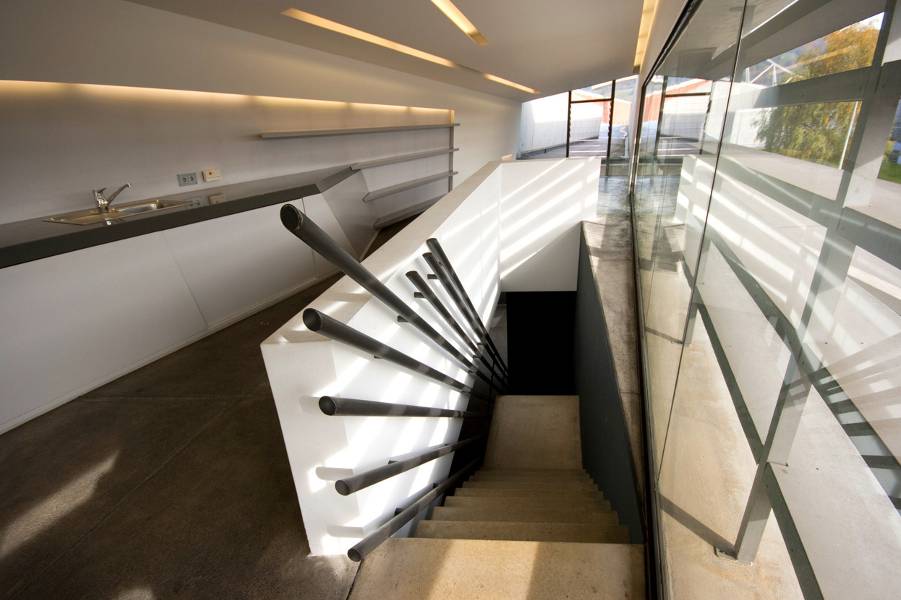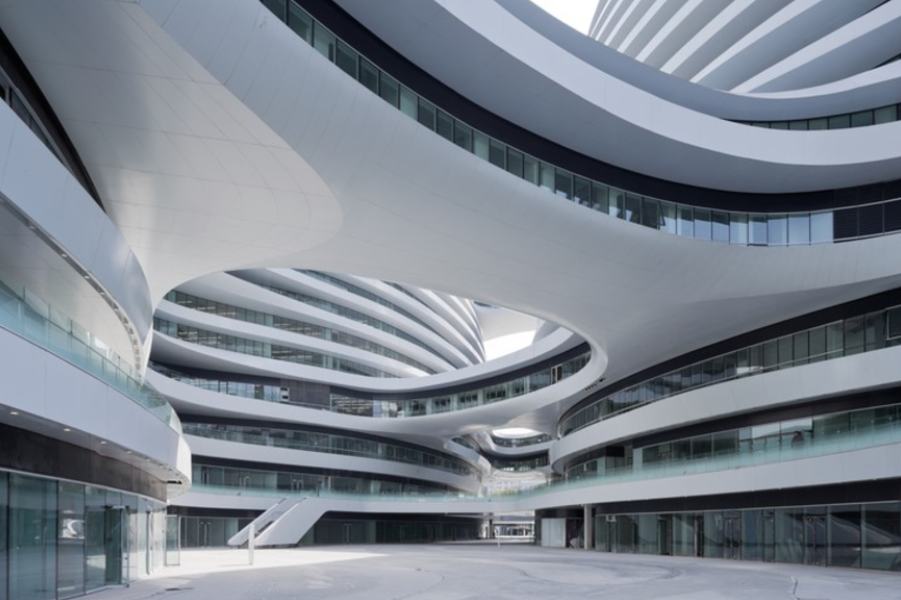
Zaha Hadid, the renowned Iraqi-British architect, has left a monumental legacy in world architecture. Her work combines innovation, fluidity, and a unique perspective that defies architectural conventions. Her most iconic project is the Fire Station at the Vitra Campus in Germany. This project, completed in 1993, marks the beginning of her career and represents a transformation in how functional spaces can be artistically conceived.
Zaha Hadid: The Visionary of Architecture
Zaha Hadid was the first woman to receive the Pritzker Architecture Prize in 2004, one of the highest awards in the industry. Known for her bold style, blending organic and geometric forms, Zaha broke cultural and architectural barriers. Her designs are easily recognizable by their fluid and dynamic lines, often inspired by nature and movement.
Her most iconic works include the London Aquatics Centre, built for the 2012 Olympic Games, and the Heydar Aliyev Centre in Azerbaijan. Each project bears his signature: sculptural forms and a futuristic aesthetic.

The Vitra Campus Fire Station
Located in Weil am Rhein, Germany, the Vitra Campus Fire Station was commissioned following a devastating fire at the Vitra factory in 1981. In addition to its practical functionality, the building became a landmark architectural piece, establishing the campus as a space for artistic and architectural experimentation.
Building characteristics
1. Lines and Geometry
The building is composed of angular lines and overlapping planes that appear to be in constant tension, symbolizing movement and strength. Zaha Hadid used exposed concrete to create a sense of weight and solidity, while sharp lines evoke dynamism.
2. Connection with the Land
The structure interacts directly with the terrain, integrating itself into the landscape. The shape of the building seems to emerge from the ground, almost like a natural extension of it.
3. Functionality
Despite its innovative design, the building meets the practical requirements of a fire station. The space was designed to be efficient, allowing for rapid movement of vehicles and personnel in the event of an emergency.
4. Intentional Minimalism
The interiors are minimalist, prioritizing functionality and reflecting the austerity of the concrete used on the exterior. Natural light enters through strategically positioned openings, creating a play of shadows that highlight the interior lines.

Transformation into an Art Object
Interestingly, the Fire Department ceased to operate as such just a few years after its inauguration. Today, it serves as an exhibition space for the Vitra Campus, which houses design and architecture works by great names such as Frank Gehry and Tadao Ando. This reinforces the multifaceted character of the project, which transcends its initial functionality.
The Importance of the Fire Department in Zaha Hadid’s Career
This project was Zaha Hadid’s first building to be built, transforming her from a visionary on paper to an architect whose ideas revolutionized concrete. It solidified her reputation as an artist who not only designed buildings, but created inhabitable sculptures.

Zaha Hadid’s Legacy
Zaha Hadid continues to inspire generations of architects with her bold and experimental approach. Her work on the Vitra Campus Fire Station symbolizes more than architecture; it embodies the courage to dream beyond limits.
The building, even after decades, remains a landmark of innovation, demonstrating how a space can be simultaneously functional, artistic and revolutionary. It’s a remainder that architecture is more than construction – it is expression, movement and art.
If you haven’t had the chance to visit the Vitra Campus yet, it’s a must-see experience. Each building tells a story, but Zaha Hadid’s Fire Station stands out as one of the first major achievements of a brilliant mind who transformed architecture forever.

Other Iconic Projects by Zaha Hadid
In addition to the Fire Station at the Vitra Campus, Zaha Hadid has been responsible for numerous projects that have redefined modern architecture. Here are some of her most notable works:
Heydar Aliyev Center (Baku, Azerbaijan)

This cultural center, opened in 2012, is famous for its fluid curves that symbolize the integration between urban and natural spaces. The design without sharp edges or right angles reflects Hadid’s innovative philosophy.
MAXXI Museum (Rome, Italy)

The National Museum of 21st Century Arts, completed in 2010, is a tribute to contemporary art. Its dynamic forms and overlapping structures create a unique environment for displaying art.
Sheikh Zayed Bridge (Abu Dhabi, United Arab Emirates)

Completed in 2010, this bridge is a true icon of structural design. Its sinuous curves evoke desert dunes and represent a fusion of functionality and aesthetics.
London Aquatics Centre (UK)

Built for the 2012 Olympic Games, this center is a celebration of movement and water. Its undulating roof reflects the fluidity of water sports.
Galaxy SOHO (Beijing, China)

A complex of offices, shops and entertainment, Galaxy SOHO opened in 2012. Its continuous and seamless structure creates a flow of integrated spaces.
Guangzhou Opera (Guangzhou, China)

Opened in 2010, this masterpiece combines futuristic design and excellent acoustics. Inspired by stones rolled by rivers, the opera house blends seamlessly into the surrounding landscape.
Napoli Afragola Train Station (Naples, Italy)

Completed in 2017, this station is known as “the gateway to southern Italy”. Its sculptural design combines modernity and functionality, connecting different regions of the country.
The Opus (Dubai, United Arab Emirates)

This spectacular building, which opened in 2020, houses a hotel, residences and offices. The design resembles a floating cube with a central void that defies the laws of traditional architecture.
Recently, the Pett Capellato Solutions Hub visited the Vitra Campus Fire Department and had the opportunity to experience the grandeur and impact of this project up close. The team was deeply impressed by Zaha Hadid’s boldness in transforming a functional building into a true work of art. The experience reinforced the importance of aligning design, innovation and functionality, values that the Hub also seeks to incorporate into its solutions. This encounter with Zaha Hadid’s genius was a unique inspiration, reaffirming the power of architecture as an element that transforms spaces and ideas.





